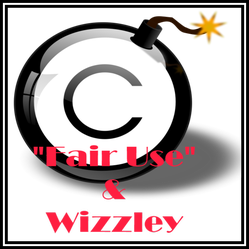The law is trying to catch up with the Internet phenomenon, which exploded in its reach and the extent to which it has become part of our lives in only the past 25 years or so. With more and more people trying to make a living online, whether in the fields of writing, art or marketing, the theft of intellectual properties has grown to proportions never before seen. Copyright protected writing and artwork, especially photos and graphic images, are stolen and republished as if they are the product of the thief on the one hand, or used without paying royalties to the copyright holder, on the other hand, whether or not credit is attributed to him or her.
Sometimes the theft is purposeful and sometimes it is naive. Regardless of this, once the theft has been discovered and the copyright holder asks for removal of the offending work/s and the misuser complies, it will generally end at this point. However, the apparent misuse may actually fall under the "fair use" doctrine and so removal is not necessary, perhaps not even desirable.
Sometimes people find themselves in a photo appearing in an article online and they did not give permission for their likenesses to be used. The author may claim editorial use and insist he or she did no wrong.
Unfortunately, the terms "fair use" and "editorial use" are sometimes inappropriately applied and at other times, when it could be justifiable the individual is not sufficiently aware of the definitions to be able to justify his or her use of the materials in question.
This article concerns only the issue of photos and graphic images and will explore whether or not wizzley articles can fall under the "fair use" or "editorial use" doctrines and, therefore, justify the use of other people's photos and/or graphics without paying royalties (while still, of course, giving appropriate credit to the copyright holder) or the use of photos without model or property releases.






 Visiting an Art Gallery With a Two-Year-Oldon 07/27/2015
Visiting an Art Gallery With a Two-Year-Oldon 07/27/2015
 Using the News to Enhance Jewish Identity in Jewish Kidson 07/24/2015
Using the News to Enhance Jewish Identity in Jewish Kidson 07/24/2015
 Xi'an - Not Just Terracotta Warriorson 06/09/2015
Xi'an - Not Just Terracotta Warriorson 06/09/2015
 Sew Your Own Wedding Dress - or Your Daughter'son 02/06/2015
Sew Your Own Wedding Dress - or Your Daughter'son 02/06/2015



Your comments are appreciated.
Hope you found it helpful.
This is indeed a lengthy piece, with many details.
I think it's best to err on the side of caution. I do try to use only OD or CC images whenever I can find one.
Thank you for this well done research. As far as I am concerned, although my articles are only educational, I use only PD graphic material and material for which I have bought all the necessary rights. I know (from other sites) even strictly educational material can serve as good resource of money (sometimes earned through pretty complicated schemes), so I will stay on the safe side - including sites which are 100 percent under my control.
I understand your point, auto censorship is not a good thing, but law is in my opinion not only about right and wrong, it's about who is stronger as well.
An informative article.
This is so informative, thanks so much for sharing.
Glad you think so, Mira. I really enjoy the research.
I learned a few important things. You always do thorough research and your articles on copyright are much appreciated!